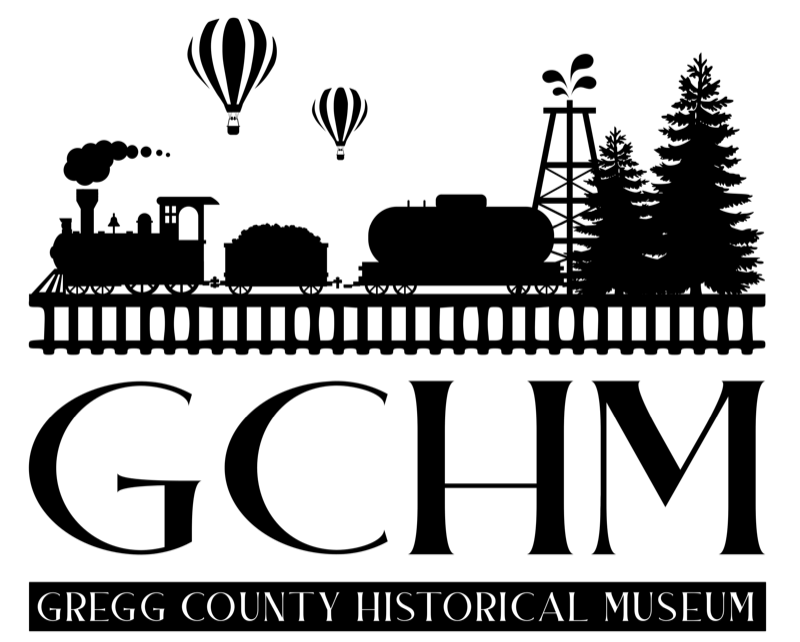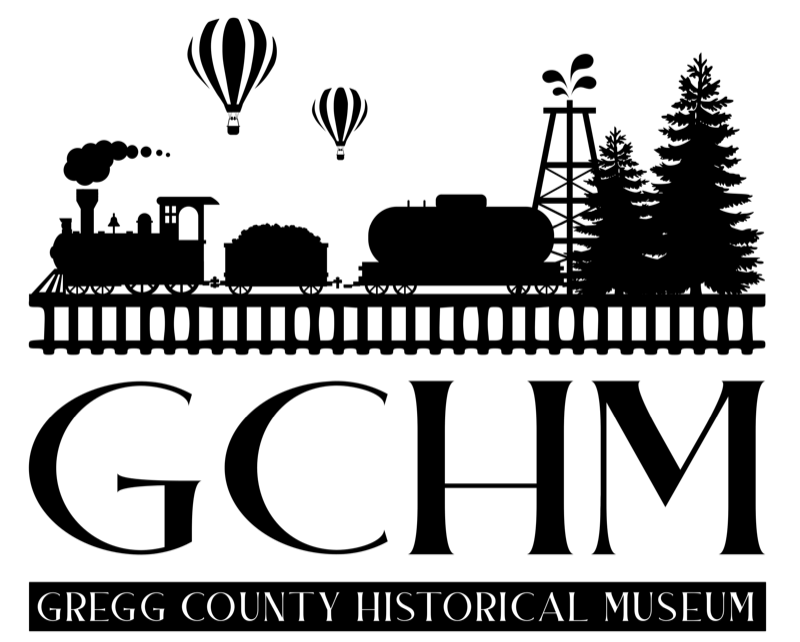Follow Us x
History of the Everett Building
In order to set the scene for the beautiful Everett Building in Longview, let's go back to the year 1870. A local farmer named Ossamus Hitch Methvin deeded two tracts of land totaling 150 acres, which are now downtown Longview, to the Southern Pacific Railroad. Later that year, the Southern Pacific platted these tracts and began selling lots.
The main intersection of the town was Center and Tyler Streets, with a public well under a shed in the middle, and the business district extended in both directions along Tyler Street.
With the development of Gregg County and the city of Longview came the first permanent courthouse which was dedicated in 1879--a beautiful brick structure that is depicted in Willard B. Robinson's book, Gone from Texas. By then, Longview had about 30 brick and stone business houses, a brick courthouse, a jail, and four church buildings. The business district had mostly been converted from wood and dirt to brick and dirt.
Between 1880 and 1910, the population of Longview increased from 1,525 to 5,155, and those years saw a corresponding increase in downtown business development. From the late 1800s until about 1911, public transportation consisted of street cars powered by mules running between the two railroad depots, located downtown, on Fredonia Street and at the south end of Sixth Street,at what was known as the junction.
After 1910, H.H. Howell organized and received a charter for Citizen's National Bank. The bank was located at the northeast corner of Tyler and Fredonia Streets, in the J. C. Turner Building. Citizen's National Bank purchased a lot half a block to the north, on the northeast corner of Fredonia and the alley named Bank Street. There, the Everett Building would open its doors as Citizen's National Bank. Construction of the new building was a collaborative effort of Citizen's National Bank President L. J. Everett and local educator and architect Samuel Blocker, who was one of the earliest members of the state architectural association.
The Everett Building, since 1910, has been a two-story, raised-basement structure and is located in an area of Longview where almost all 19th-century and early 20th-century buildings have been demolished or altered. The Everett Building remains as one of the few architectural specimens in Longview associated with both the cotton and oil eras in East Texas.
Constructed of brick load-bearing walls, it is detailed with wood and stone ornamentation. Fronting 50 feet on Fredonia and 100 feet on Bank Street, the building presents its main focus at the southwest corner with a rounded bay and recessed main entrance on the first level. Two free-standing, and one square, engaged Corinthian columns made of pink granite flank each side of the corner recessed entrance and support the second-story bays above. It is said that the granite came from the same Marble Falls quarry that provided stone for the construction of the Texas state capitol in Austin.
The structure is divided into several bays on each street elevation, with pilasters interrupted between stories by a corbelled molding. Another corbelled brick mold tops the second story, with frieze panels above; a pressed metal cornice projects higher, distinguished by a dentil band. Originally, a decorative piece adorned the southwest corner rooftop, but it was no longer in existence when the building last changed hands in 1979.
Typical of the early twentieth century revival of architectural classicism, the structure exhibits a reserved application of exterior ornamentation. The formalism executed in detailing and in window and door arrangement defines the building as a breaking away from fussy, over-adorned Victorian prototypes. The windows are predominantly wood-sash, one-over-one units in a single or paired arrangement. Round fan lights top the second story windows on the Fredonia elevation and continue around the corner bay. Commercial display-type windows form various patterns of fenestration on the ground level of the Fredonia Street front.
The first tenant occupying this commercial northern section of the Everett Building was Matthewson Drug Store. Later, Ballard Drugs, and then L & L Gallery leased the space. More recently, Van Burkleo Financial Services was located in this commercial area.
Citizens National Bank remained in business until 1924, when the company voluntarily liquidated its assets and closed. Two other banks occupied the structure for the next sixteen years: Guaranty State Bank, then Rembert National Bank.
In the early history of the Everett Building, Newt Oden had a barber shop on the basement level. Mr. Oden offered haircuts for 25 cents, shaves for 15 cents, and gentlemen's baths for 25 cents. Tenants in the main area of the Everett Building were the American Red Cross during World War II, and Lanier's Clothiers from 1944 to 1960. A 1956 advertisement in the yellow pages of the telephone directory proclaimed that Lanier's was the small house of great quality for men and boys. Another ad several years later said it was where the unique is commonplace. Many men tried on their new suits for alterations in the former vault of the bank. During the 1950s, the basement of the building housed Oliver Hipp's barber shop. After 1960, and until June of 1979, the structure remained virtually empty, except for special temporary activities such as the Longview Centennial in 1970 and the U. S. Bicentennial in 1976.
The upstairs of the Everett Building was designed for offices, and through the years it housed lawyers, doctors, and dentists. The trim and doors on all the upstairs rooms are made of rich mellow pine. There has never been an elevator in the building, so the offices on the top floor were accessible only by climbing steep stairs located just north of the main entrance on Fredonia Street. In later years, an outside staircase was installed at the rear of the building.
The Gregg County Historical Foundation, which had been chartered by the State of Texas in 1966, had always hoped to have a permanent place to display its collection of historic Gregg County artifacts, documents, and photographs. Ann Lacy Crain purchased the Everett Building and on May 27, 1979, and donated it to the Foundation in loving memory of her parents, Rogers and Lawson Keener Lacy. In that year, the building was entered in the National Register of Historic Places.


